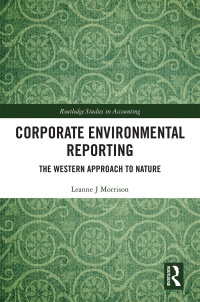








Baker Corporation applies manufacturing overhead on the basis of direct labor-hours. At the beginning of the most recent year, the company based its predetermined overhead rate on total estimated overhead of $97,650 and 3,100 estimated direct labor-hours. Actual manufacturing overhead for the year amounted to $99,850 and actual direct labor-hours were 2,850. The applied manufacturing overhead for the year was closest to: (Round your intermediate calculations to 2 decimal places.) $94,623 $86,799 $91,455 $89,775 The direct labor rate for Brent Corporation is $9.00 per hour, and manufacturing overhead is applied to products using a predetermined overhead rate of $6.00 per direct labor-hour. During May, the company purchased $60,000 in raw materials (all direct materials) and worked 3,200 direct labor-hours. The Raw Materials inventory (all direct materials) decreased by $3,000 between the beginning and end of May. The Work in Process inventory on May 1 consisted of one job which had been charged with $4,000 in direct materials and on which 300 hours of direct labor time had been worked. There was no Work in Process inventory on May 31. The balance in the Work in Process inventory account on May 1 was: $6,700 $8,500 $0 $4,500 In a job-order cost system, direct labor is assigned to a job using information from the employee time ticket. True False Arvay Corporation has provided data concerning the Corporation's Manufacturing Overhead account for the month of October. Prior to the closing of the overapplied or underapplied balance to Cost of Goods Sold, the total of the debits to the Manufacturing Overhead account was $64,800 and the total of the credits to the account was $59,300. Which of the following statements is true? Manufacturing overhead transferred from Finished Goods to Cost of Goods Sold during the month was $64,800. Manufacturing overhead applied to Work in Process for the month was $64,800. Manufacturing overhead for the month was underapplied by $5,500. O Actual manufacturing overhead incurred during the month was $59,300. In a job-order costing system, the use of indirect materials that have been previously purchased is recorded as a credit to: Finished Goods inventory. Work in Process inventory. Raw Materials inventory. O Manufacturing Overhead. Messana Corporation reported the following data for the month of August: Inventories: Ending Raw materials Work in process Finished goods Beginning $36,000 $23,000 $37,000 $24,000 $17,000 $55,000 Additional information: Raw materials purchases $69,000 $94,000 Direct labor cost $54,000 Manufacturing overhead cost incurred Indirect materials included in manufacturing overhead cost incurred Manufacturing overhead cost applied to Work in Process $8,000 $56,000 The adjusted cost of goods sold that appears on the income statement for August is: O $211,000 O $229,000 O $209,000 O $247,000 Clear Colors Corporation uses a predetermined overhead rate based on direct labor costs to apply manufacturing overhead to jobs. At the beginning of the year the Corporation estimated its total manufacturing overhead cost at $350,000 and its direct labor costs at $200,000. The actual overhead cost incurred during the year was $362,000 and the actual direct labor costs incurred on jobs during the year was $208,000. The manufacturing overhead for the year would be: $2,000 overapplied. $2,000 underapplied. $12,000 underapplied. O $12,000 overapplied. Caber Corporation applies manufacturing overhead on the basis of machine-hours. At the beginning of the most recent year, the company based its predetermined overhead rate on total estimated overhead of $60,600. Actual manufacturing overhead for the year amounted to $59,000 and actual machine-hours were 5,900. The company's predetermined overhead rate for the year was $10.10 per machine-hour. The overhead for the year was: $1,010 overapplied $590 underapplied $1,010 underapplied $590 overapplied Dagger Corporation uses direct labor-hours in its predetermined overhead rate. At the beginning of the year, the total estimated manufacturing overhead was $270,050. At the end of the year, actual direct labor-hours for the year were 17,500 hours, manufacturing overhead for the year was underapplied by $12,300, and the actual manufacturing overhead was $266,050. The predetermined overhead rate for the year must have been closest to: $13.63 $15.16 O $14.50 O $15.44















